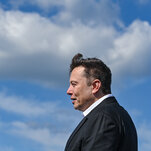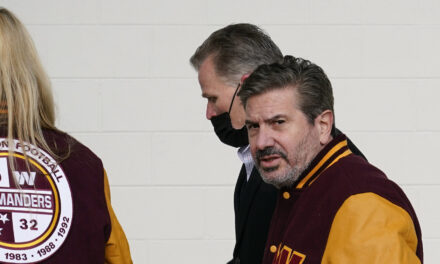
In Russia, a Military Buildup That Can’t be Missed
MASLOVKA, Russia — Deep in a pine forest in southern Russia, military trucks, their silhouettes blurred by camouflage netting, appear through the trees. Soldiers in four-wheel-drive vehicles creep along rutted dirt roads. And outside a newly pitched tent camp, sentries, Kalashnikovs slung over their shoulders, pace back and forth.
Over the past month or so, Russia has deployed what analysts are calling the largest military buildup along the border with Ukraine since the outset of Kyiv’s war with Russian-backed separatists seven years ago.
It is far from a clandestine operation: During a trip to southern Russia by a New York Times journalist, evidence of the buildup was everywhere to be seen.
The mobilization is setting off alarms in the North Atlantic Treaty Organization, European capitals and Washington, and is increasingly seen as an early foreign policy test for the Biden administration, which just hit Moscow with a new round of sanctions. Russia responded almost immediately, announcing on Friday that it would expel 10 U.S. diplomats.
The American sanctions were intended to punish Russia for numerous past actions, including its meddling in United States elections, the “Solar Winds” hacking of government agencies and corporations, various disinformation efforts and the annexation of Crimea.
Ukraine’s minister of defense, Andrii Taran, told European lawmakers on Wednesday that Russia is now garrisoning about 110,000 soldiers near the Ukrainian border. In Washington, the director of the C.I.A. told Congress that it remains unclear whether the buildup is a show of force or preparation for something more ominous.
Even if the goal of the buildup remains unclear, military analysts say it was most certainly meant to be seen. A show of force is hardly a good show if nobody watches.
“They are deploying in a very visible way,” said Michael Kofman, a senior researcher at CNA, a think tank based in Arlington, Va., who has been monitoring the military activity. “They are doing it overtly, so we can see it. It is intentional.”
In fact, lest the movements go unnoticed, the Russian military has been issuing statements announcing some of them in advance. The high visibility has cost Russia any element of surprise, leading analysts to minimize but not rule out the possibility of an actual attack.
More likely, they say, the buildup is intended as a warning to the West not to take Russia for granted. After four years of deference from the Trump administration, President Vladimir V. Putin now finds himself in an uncomfortably exposed position, Dmitri Trenin of the Carnegie Moscow Center said in a recent essay.
The Kremlin’s relations with Europe are at their lowest ebb since the Gorbachev era, soured over evidence of Russian intrigue and meddling. “At the same time,” Mr. Trenin wrote, “coordination between U.S. and European policies on Russia has substantially increased under Biden.”
Notoriously sensitive to any slights, Mr. Putin cannot help but recognize that Russia is still well down the list of President Biden’s foreign policy priorities.
Mr. Putin might also have been provoked by the actions of President Volodymyr Zelensky of Ukraine, who in recent months has moved troops close to the border with the separatist regions, shut down Russia-friendly TV stations and charged some separatist leaders with treason.
From this perspective, the massed troops could also serve to pressure Ukraine to shift its positions in talks to settle the war more on Russia’s terms.
Up close, the Russian buildup is even harder to miss. Tank tracks cut across a parking lot inside the village. Children on the roadsides gawk as six-wheeled military trucks roll by, kicking up clouds of dust. Russian and foreign reporters have been showing up daily to watch the buzz of activity.
Interviewed on a recent, balmy spring day as they turned over the damp black soil of their garden plots for planting, residents of villages near the Pogonovo training ground, an epicenter of this buildup, seemed happy to play along with the supposed cloak of secrecy.
Yevdokia Novikova, 86, a retired nurse, said the military activity all about was conveying a message to the West: “It is pointless to fight with Russia,” she said of the message.
But then, her eyes narrowing with suspicion of a foreigner asking questions about the military vehicles seen all about, she also said the activity was not meant to be seen at all. “Watch out!” she said. “If you write the wrong words you could get hit with a stick.”
But this otherwise unremarkable rural region on the Russian steppe, about 110 miles from the Ukrainian border, is unmistakably serving as a hub for the buildup. Commercially available satellite images and pictures posted on social media have shown hundreds of armored vehicles either traveling the roads or parked in the pine forest.
A train depot in the center of town serves to transfer tracked vehicles from railcars to flatbed trucks, according to social media posts confirmed as authentic by the Conflict Intelligence Team, a group of independent Russian military analysts.
Gigantic military trucks are parked within sight of the roads, which have, strangely, remained open to public traffic.
One video posted online and authenticated by the Conflict Intelligence Team showed a huge, tracked multiple rocket launcher called a TOS, nicknamed Pinocchio for its bulging, nose-like weapon. It chugged along on a flatbed truck between summer homes in Maslovka.
Flatbed trucks also hauled armored personnel carriers called BMPs, the Russian equivalent of Bradley fighting vehicles. Artillery, infantry, special forces units, tanks, missiles and naval landing craft have all been photographed deploying toward the Ukrainian border.
Earlier this month, the Russian military issued a news release to announce the redeployment of the naval landing craft closer to Ukraine, in case anybody was curious. The vessels sailed along rivers and canals connecting the Caspian Sea to the Black Sea. The ministry posted pictures.
Mr. Biden has signaled a desire to de-escalate. In conciliatory comments Thursday, he said the new sanctions were not the most severe the United States could have taken. “I chose to be proportionate,” he said. “The United States is not looking to kick off a cycle of escalation and conflict with Russia.” He has proposed a summit meeting with Mr. Putin.
The Kremlin spokesman, Dmitri S. Peskov, has said repeatedly that Russia is within its rights to garrison soldiers where it pleases within its borders. Russia’s defense minister, Sergei K. Shoigu, said he ordered a nationwide readiness check of the military in response to aggressive moves by NATO.
For the most part, people living around the Pogonovo training ground voiced support for Russia’s military muscle flexing.
“If they calmed down, so would we,” Aleksei, a retired Russian air force mechanic who declined to offer his last name for fear of the authorities, said of the Ukrainians.
But, he added, the Russian military often trained nearby, and this spring’s activity was not unusual. “There’s no alarm going off here,” he said with a shrug. “None at all.”
Not all the residents were so friendly. One man walked to the fence of his yard, scowled and asked me, “Why hasn’t the F.S.B. caught you yet?” referring to Russia’s domestic intelligence agency.
Driving away from the village, military police officers stopped our car — and demanded that we follow them right onto the military training zone, for a conversation with a commander.
The road led past chunky, green military trucks parked in the forest, some with communications antennas sprouting from their roofs, and to a city of tents, all disguised with camouflage netting. “Your presence here is not forbidden,” the commander, Capt. Kirill Smirnov, said. “It is also not recommended.”
The United States and its allies are increasingly worried about the Russian troop buildup, William J. Burns, the C.I.A. director, warned the Senate on Wednesday. The buildup includes enough forces for a possible incursion.
But Mr. Burns said U.S. officials were still trying to determine if the Kremlin was preparing for military action or merely sending a signal.

















